
Tsutomu-san's One Man Show
Once again, I am met today by Kumiko-san who is acting as my guide while I am in Tokyo, escorting me to a wide variety of Kazenoko shows all over town in a wide variety of spaces (from community halls, to school gyms to tiny kindergartens). I am always relieved to see her familiar smiling face when I make my way through the exit gates of the destination train station, after following the complex directions to get there, which usually involves changing trains at least three times and traveling up to an hour on crowded carriages through busy stations.
As we make our way on foot through the street to the venue, I ask Kumiko to tell me a little about Koganenomi. It is a one man show performed by Tanaka Tsutomu-san (who, incidently, is brother of Kumiko’s husband, Tanaka Tooru-san, who is also a Kazenoko performer). I am puzzled as Kumiko explains that the design of the show involves a puzzle…I wonder to myself whether or not I have understood correctly. “What kind of puzzle?” I ask, but I don’t understand Kumiko’s explanation. It doesn’t matter because I know I will see it for myself, soon enough. I move onto the content of the work itself. “Is it a folk tale?”, I ask. Kumiko answers, Koganenomi means ‘The Golden Bean’ and is a tale created by Tsutomu-san about a carpenter who is struck by lightening and looses his memory. He visits a doctor and is told that the only thing that will help him to get his memory back is a golden bean. And so he journeys to find it and meets some interesting characters along the way.
At this point in our journey, we come across a Dango stall (rice balls on sticks), they smell so delicious that Kumiko and I both stop and look. Kumiko buys Go-Hon (five sticks) to take as an Omiyage (Thank you present) for Tsutomu-san. Then, as though we had not stopped at all, Kumiko explains “Tsutomu-san made up this story for his children, and he has four of them so it grew and grew over the years”. I wonder how a performer manages to feed four children, and ask Kumiko what his wife does, “She works in the Kazenoko office”; I am discovering that Kazenoko really is one big family.
KOGANENOMI- SHOW DESCRIPTION
Tsutomu-san steps out from behind the flat playing a trumpet like a clown (he is not very good at it but is trying very hard…and so the audience loves him and wants him to succeed). Then he starts to experiment with the mouth piece of the trumpet and the funny sounds it makes and starts to attach other found objects to his mouth piece. First a long pipe, then a big plastic bottle and a watering can. The children are delighted and thoroughly ‘warmed up’. It is now time for the story to begin and the ‘puzzle’ is revealed!
It is a large (1 x 1.5 meters) hand painted, wooden puzzle, containing all the characters and set items that Tsutomu- san will expertly tell the Koganenomi tale with. They all fit together perfectly, creating a spectacularly colourful puzzle. Tsutomu-san animates the pieces one by one, like puppets to paint the large stage pictures (for example, when the carpenter is struck by a lightening bolt) and then turns into the character himself to act out the more detailed pictures (facial expressions, reactions and delivery of text). This way he can play the entire cast of the story in a light manner where by he jumps from the role of story teller/ puppeteer to actor.
The content of the story is very much like a Rakugo routine in that it is filled with comic characters, routines and word plays and has no moral but is purely for the sake of entertainment. After travelling the land, meeting all sorts of interesting characters from dancing girls to a group of babies to a very hungry Sumo Wrestler, the carpenter finally finds the golden bean, eats it and his memory returns. But it doesn’t end there, with the help of the audience, Tsutomu-san places all the pieces of the puzzle back together. He plays naïve beautifully and sincerely and pretends not to know how it goes back together. This opens up communication with the audience and the children instruct Tsutomu on what goes where. He expertly manages the children so that all have a chance to input and the interaction itself becomes a comedy routine with Tsutomu-san playing off the various unexpected suggestions expertly like when one little girl said, “Put the Sumo-san on top of the babies!”, Tsutomu-san responded, “But if I do surely I will squash them!”.
“And now, for the second story!” announces Tsutomu-san. I am surprised- will he be able to hold the attention of the audience for another tale? We have already been sitting for forty minutes- in my experience in Australia this is normally when we are in the last five minutes of the show, then the performers take some questions from the audience and then pack up the show. Tsutomu gets everyone to have a stretch and then we count down from ten while he prepares for the second tale. A flat is moved downstage and from here, each time Tsutomu-san emerges from behind that flat, he is wearing a different mask in a different characterisation. He now tells the children a traditional folk tale of the Kitsune and the Tanouki (the Fox and the Racoon). Not only do the Fox and Racoon feature in this tale, but also a clever mosquito and an Oni (The red faced, long nosed monster that appears in many traditional Japanese folk tales). The stand out performer, however, in the telling of this tale is not Tsutomu-san, who expertly jumps from playing Monster, to Fox, to damsel in distress, but the little girl that is invited from the audience to play the mosquito. Tsutomu asks her to give a Jiko-shoukai (Self Introduction) to the audience and then carefully introduces her to the mosquito mask (a funny looking thing with bulging eyes and a long beak, which he has made himself). The mask sits on top of her head so we can see her delightful, smiling face the whole time that she helps Tsutomu on stage. She giggles the whole time, while expertly following his instructions, which include sneaking up behind the Oni and biting him on the bottom!
I discover that this level of audience interaction, is deeply rooted in the Kazenoko telling of stories. I recall that Yuko-san also invited a volunteer from the audience to help her with the ‘Paper – play’ part of Asobo. Afterwards, Kumiko-san tells me about Ni Tasu San, one of the early Kazenoko ensembles (that Tsutomu-san worked in) that toured small scale shows around to kindergartens. The stories that the ensemble told were invariably folk tales and always incorporated children from the audience as volunteers to play different roles.
After the show I have a chance to talk with Tsutomu-san again and thank him for the performance. I ask him if this is a particular style of performance in Japan (through the animation of the puzzle) and he tells me proudly that it is his own invention. And goes on to passionately describe that he was taught by his Sensei that there is no use in doing what someone else is already doing, be original! I am a little surprised because I had assumed that in Japan, the art lies in learning exactly how it was done and always has been done, perfecting that and then passing it on. It seems that this is only the case in the world of the Dentougeinou (the traditional arts), and the world of contemporary theatre has a completely different approach. I am relieved because it is in line with my mission in the arts, which has always been towards the creation of new work, for a new audience.
As Kumiko-san and I leave the community centre and make our way back to the station through the streets of Habarigaoka, we both have an unspoken understanding, that on the way back to the station, we will stop at the little stall on the side of the road and buy a Dango each. They are warm and delicious. When we board the train we find that we are not talking about theatre (as we usually do) we are talking about food and realise we are still hungry. We feel like the Sumo-san from Tsutomu’s play who eats rice cake after rice cake but is still hungry. We decide to change trains at Asakusa where we head straight for big hot bowls of Ramen. Full of food and inspiration, we say goodbye. Another great day with Kumiko-san!
http://www.kazenoko.co.jp/infantwork/newfolder-19/
(Visit this link to see images of Koganenomi)
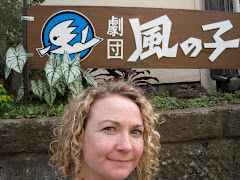

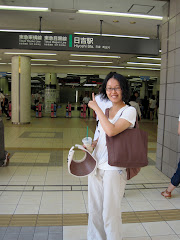
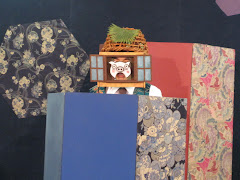

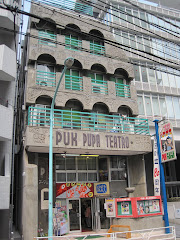
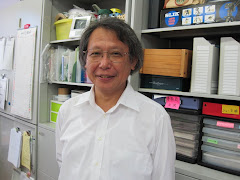
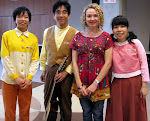
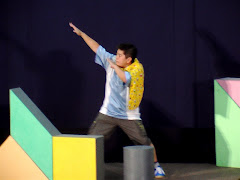



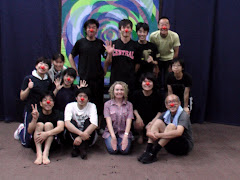


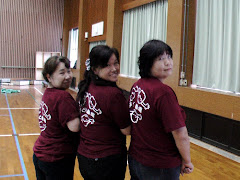
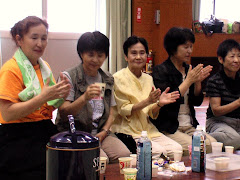
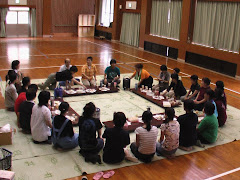
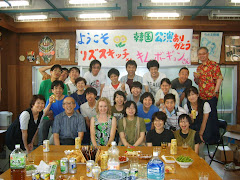
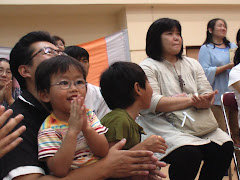
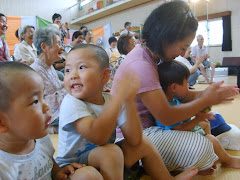
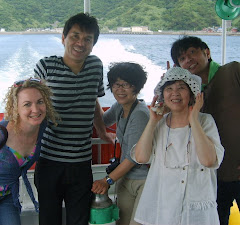
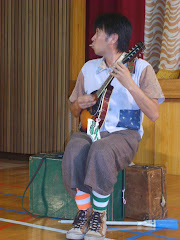
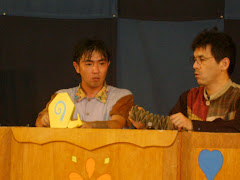

No comments:
Post a Comment